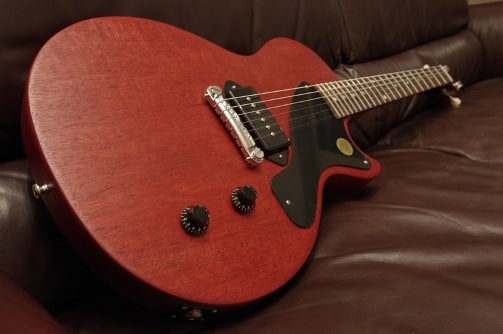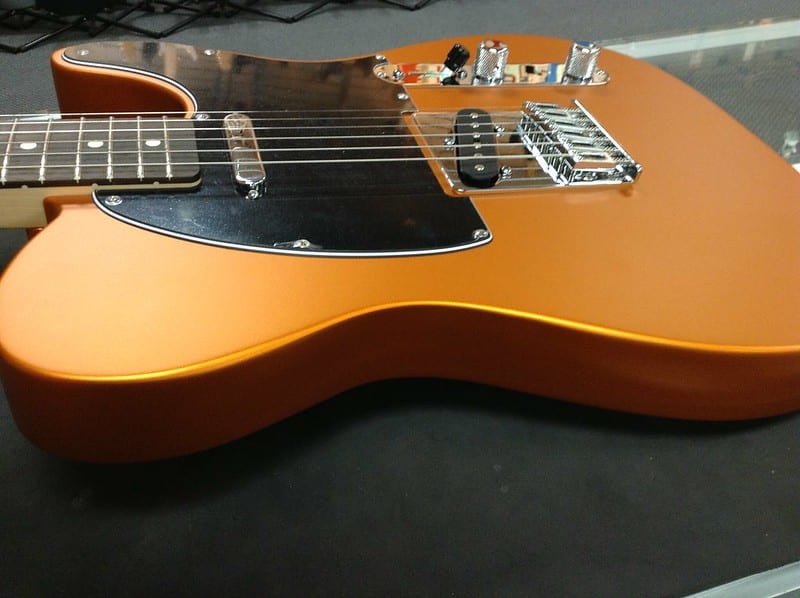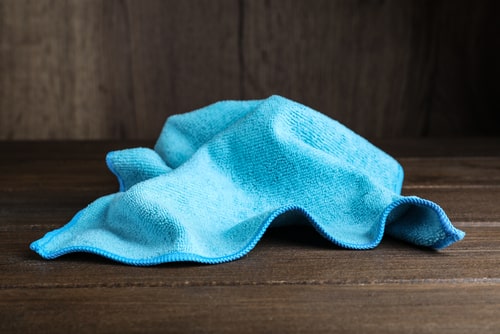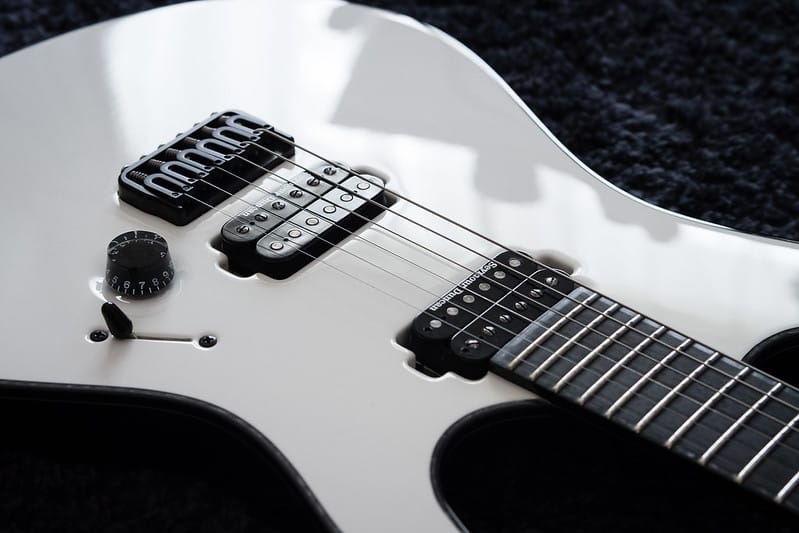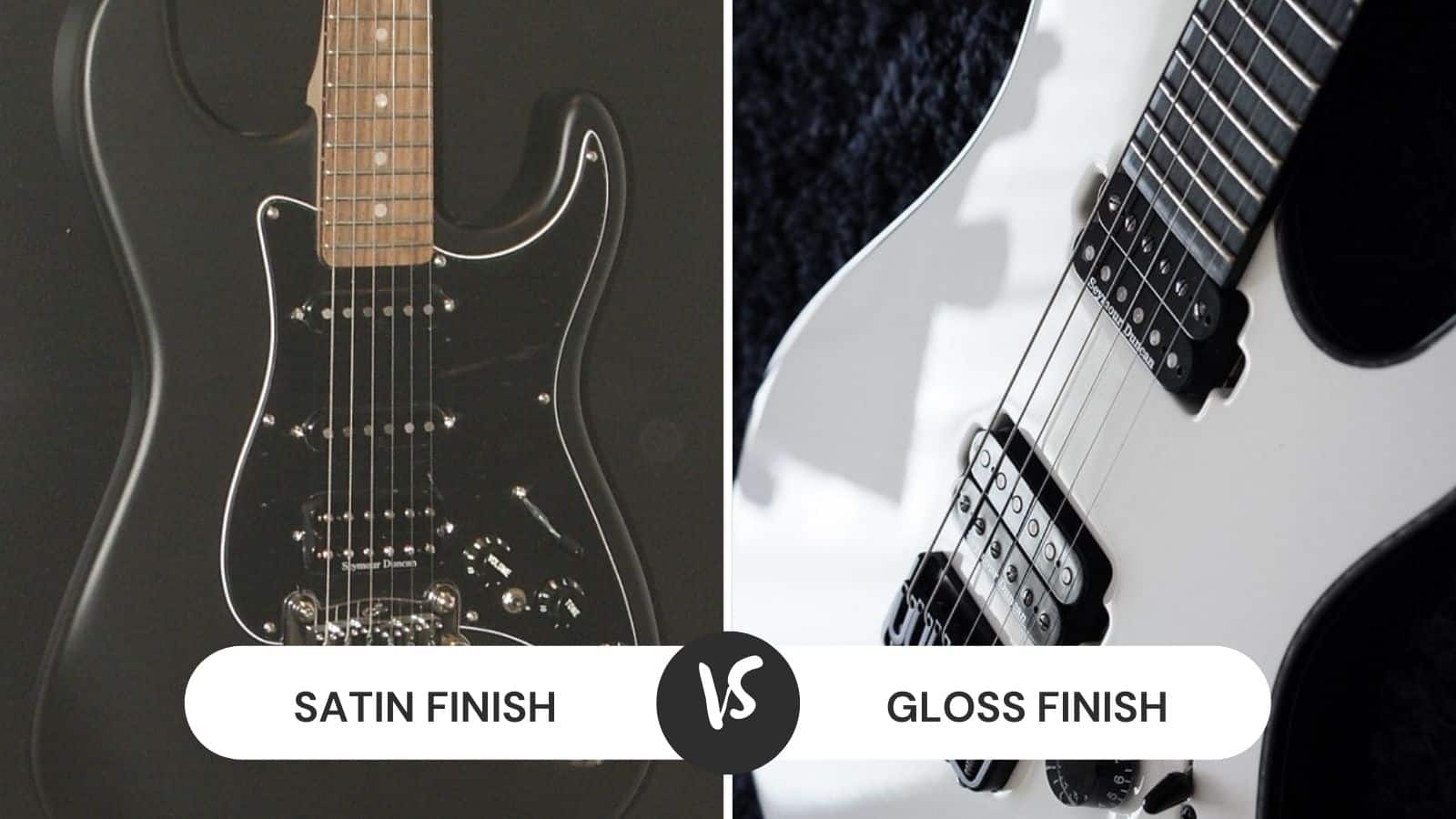
With the thousands of guitars available on the market, it’s evident that they use different types of finishes. The finish not only impacts the aesthetics of the guitar, but it directly influences the utility and performance as well.
Usually, the guitar manufacturers choose between gloss finish and satin finish for guitars, but the users don’t understand how they are different from each other and how they impact the guitar’s function.
Comparing the Satin vs Gloss Finish Guitar
The Comparison Chart
| Satin Finish | Glossy Finish | |
|---|---|---|
| Music Style | Softer styles, such as folk, classical, and cultural | Metallic and bold music styles |
| Price | Affordable | Expensive |
| Cleaning & Maintenance | Convenient to clean and maintain | Extensive maintenance is required |
| Appearance Of Stains | Hides or covers the stains | Makes the stains prominent |
| Layering | Thin application | Thick layer |
| Aesthetic | Natural and rustic look | Premium and modern look |
Satin Guitars
The satin finish for guitars is suitable for creating a softer impression and is suitable for guitars that need to play the softer music genres, including classical, country, and folk music. The satin finish creates a moderate shine and matte finishing, given the low reflection design.
For this reason, this finishing is suitable for covering the guitar’s defects. It achieves a natural look. However, many people think that satin finish guitars look rough because the wooden pores remain open.
Given the open pore design, it tends to accumulate dust, which can be challenging to clean. Similarly, it cannot be used for outdoor performances.
The satin finish is prone to scratching but adding a new layer of satin finish can cover up the scratches. In the majority of cases, the satin finish is applied in a thin form, which means the guitarists will be able to feel the wood on their hands.
The best feature of the satin finish is that the marks and fingerprints are less visible on this finish, and wiping the tissue once will clear them up.
The satin guitars tend to have a thin coating and don’t reflect much light when compared to the gloss guitars. The satin finish creates a rustic and old-school look. However, these finishes are more prone to humidity and weather changes.
The satin finishing is quite easy to apply, and it’s applied in thin form. For this reason, satin guitars are used in the affordable guitar categories. The satin finish is resistant to the sticky neck, which improves the shifting of chords and makes it smoother.
The only thing wrong with the satin finish is that it accumulates dirt. So, as long you are cleaning it regularly, you won’t have to worry about extensive maintenance processes.
This finish is actually suitable to sustain the rough treatments, and its ability to cover the scratches promises a better aesthetic appeal. It creates a matte look for the guitars. However, it doesn’t bring out the wood’s grain, but you must remember that it wears off with time.
As far as cleaning is concerned, you can use the microfiber cloth for cleaning the guitar as well as the fretboard. Keep in mind that you should use polish on the satin guitars because it damages the guitars.
The fingerprints and oil stains can be cleaned with a microfiber cloth (you can clear the neck, body, and fretboard). On the other hand, if you cannot find microfiber cloth, you can use the old t-shirt to clear the marks.
In the majority of cases, the guitar’s satin finish gets dirty due to the natural oils of the hand, but it can be easily cleared with the help of a microfiber cloth.
The satin finish tends to be more affordable because it requires less effort to make the finishing and has a thinner texture. Usually, the satin finish is used for affordable and entry-level guitars.
Gloss Guitars
Gloss finish is one of the most popular and widely used finishes for guitars and creates a cool and modern aesthetic for the guitars. Unlike the rustic and natural aesthetic created by the satin finish, the glossy finish helps create a premium and modern aesthetic.
This is because when the guitar is coated with a gloss finish, it creates a shiny appearance. For the same reason, even the most minor scratches will be prominent on the glossy guitars.
Usually, the gloss finish is more expensive because the manufacturing timeline is longer and needs multiple layers to create a smooth surface. For this reason, the guitars with gloss finishing are more expensive and need more maintenance.
The gloss finish contains a shiny and thicker finish, which usually looks like glass. These guitars are pretty smooth to touch and will be extremely reflective.
However, the gloss finish also makes the marks and stains more visible on the guitar, but it will be easier to clean as well. The gloss finish creates a modern appearance, which looks very premium and stylish.
In fact, mediocre guitar brands use gloss finish to create a premium design for their affordable guitars. Usually, the gloss finish is thick, which helps protect the guitar’s material and will protect the overall appearance as well.
It is a suitable choice for guitars needed for studio-based recording sessions as it helps reduce unwanted noise while playing the guitar. In addition, the thick finish makes it more resistant to weather and humidity changes.
It can bring out the wooden grain, particularly the guitars made from maple wood, mahogany wood, cedarwood, and spruce wood.
The gloss guitars are convenient to clean as you can use the soft cloth and cleaning wax – it helps clear the stains and maintain the gloss/shine of the finishing.
In fact, you can use the guitar polish over the guitar’s body and neck and let it stay for a few hours. Then, just use the microfiber cloth to polish the surface, and the guitar will appear very fresh.
You can apply the guitar polish directly to the guitar or spray some on the cloth and rub it all over the guitar. For the most part, it’s used for acoustic guitars.
Impact Of Guitar Finish On The Sound
Contrary to usual belief, the finish doesn’t significantly impact the guitar sound. However, the guitar sound is impacted by the guitar’s material, type of wood, and paint layers.
Theoretically speaking, the finish creates a minor difference in the sound quality, but it’s not very significant. For instance, if the electric guitar’s finish impacts the pickups, there will be slight changes in the musical tones, but it’s a rare case.
The layer of plastic or epoxy on the guitar can impact how the guitar sounds. For instance, if the guitar has a hard surface, you will experience a significant change in tone. This means that the finish’s thickness will impact the guitar’s tone and sound.
On the other hand, the application of finish can impact the tone of your guitar. Usually, the thicker finishing will dampen or choke the resonance and sound’s volume.
This is the prime reason that the satin finish is suitable for guitars with softer music styles, while the gloss finish is suitable for bold and metallic music styles.
Converting Satin Finish Into Gloss Finish
It is possible to convert a satin finish into a shiny or glossy finish guitar, and you can actually do it yourself. You can take the guitar to the music shop to get the finishing changed.
However, you can also use the guitar polish yourself to layer up the finishing.
The Bottom Line
Both satin and glossy finishing are great for guitars, and it usually depends on the music style that you prefer. This is because both glossy and satin finishes create an appealing appearance on the guitars, but it’s used for specific music styles.
For instance, the satin finish is suitable for classical, folk, and cultural music, while the glossy finish works well with bold and metallic music styles. So, it all comes down to personal preferences.

